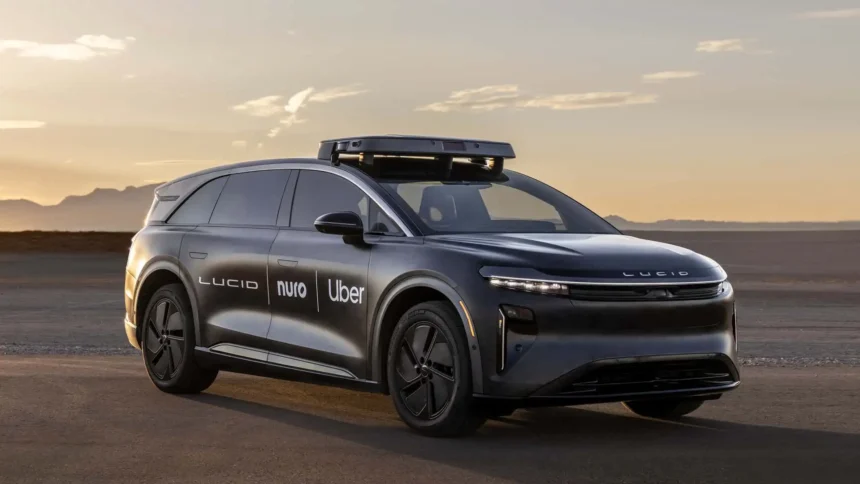Uber is gearing up to transform the rideshare experience with a futuristic twist. Starting in 2026, Uber riders in a major U.S. city will be able to hail a fully self-driving Lucid Gravity electric vehicle (EV) — a premium, seven-seat SUV built for luxury and tech. This launch is a future integration for autonomous transportation, blending high-end electric vehicles with advanced AI-powered driving systems.
What’s Happening & Why This Matters
Uber and Lucid Motors have struck a deal to deploy 20,000 self-driving Lucid Gravity SUVs over six years. The partnership combines Lucid’s cutting-edge EV platform with Nuro’s advanced autonomous driving software. Nuro’s Level 4 autonomy system allows these vehicles to drive hands-free without human intervention in specific environments, a leap beyond the Level 2 systems found in many consumer EVs today.
The Lucid Gravity, which debuted in late 2024, is already recognized for its luxury and tech-forward design. It seats seven, boasts a roomy frunk, and carries a starting price near $95,000; a lower-priced version is coming soon. Uber will offer the Gravity robotaxi service as a premium rideshare option. The Gravity caters to customers who want style, safety, and convenience.

Jiajun Zhu, CEO of Nuro, explains, “We’ve spent almost a decade building an AI-first autonomous system that’s safe, scalable, and vehicle-agnostic. Our driverless tech, combined with Lucid’s advanced vehicle and Uber’s platform, will bring robotaxi services to millions globally.”
Unlike many automakers retrofitting self-driving tech, Lucid designed the Gravity with autonomy in mind. The vehicle already has braking and steering controls ready for hands-off driving, making integration with Nuro’s AI seamless.

Uber’s move comes amid increasing competition in the autonomous rideshare market. Companies like Waymo are expanding nationwide, and Tesla recently started its robotaxi service. Uber plans to offer a hybrid approach. Alongside its self-driving fleet, it intends to integrate vehicles from partners like Waymo within its app.
An Uber executive shared at a May event, “We envision reinventing car ownership by offering a mix of autonomous and traditional rides. Our goal is a seamless blend where riders get the best of both worlds.”
TF Summary: What’s Next
Uber’s rollout of the Lucid Gravity robotaxi in 2026 will mark a turning point for self-driving EVs in urban mobility. As this service begins in a major U.S. city, it will test both technology and consumer acceptance of fully autonomous rides. The partnership between Uber, Lucid, and Nuro represents the budding enthusiasm for luxury EVs and advanced AI driving systems.
The next few years will reveal how well robotaxis scale, navigate complex city environments, and meet rider expectations. Meanwhile, competition with Tesla and Waymo will push innovation further. Uber’s hybrid fleet model promises flexibility, blending human-driven and autonomous options under one platform.
— Text-to-Speech (TTS) provided by gspeech


